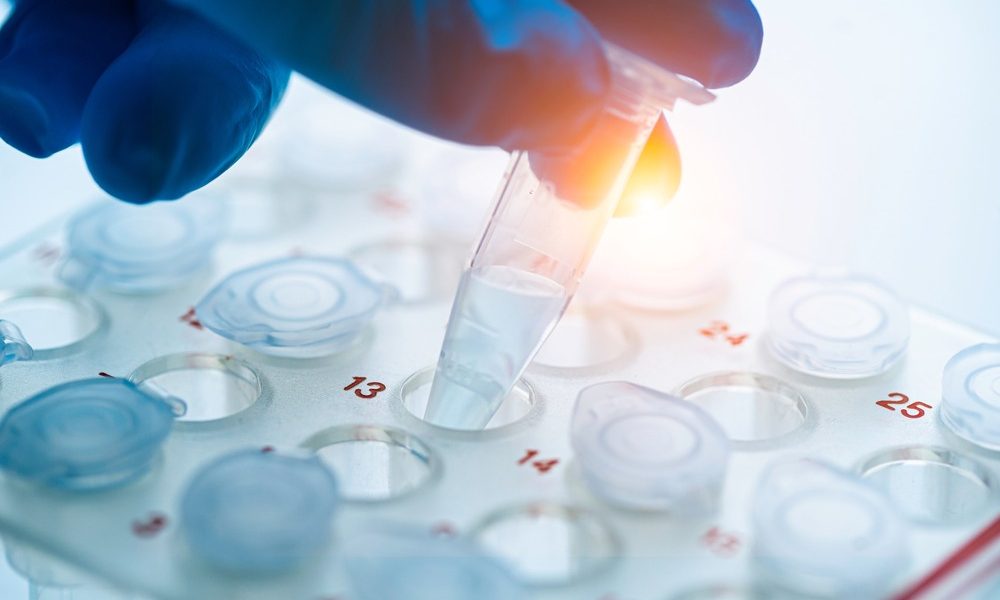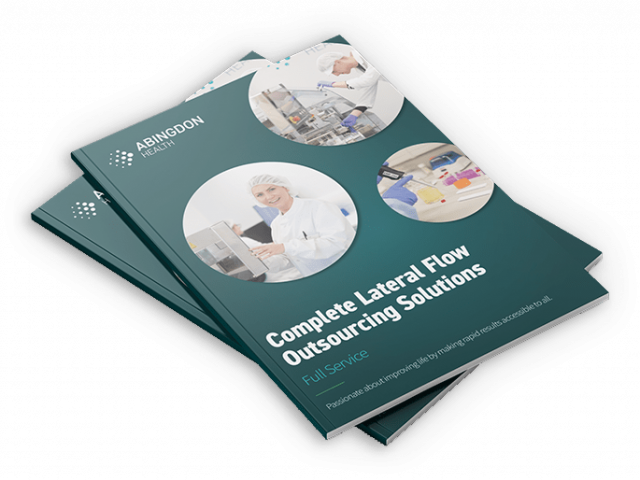Combining Molecular & Lateral Flow: A Game Changing Innovation?

Molecular Testing – A Brief Overview
Molecular Lateral Flow – An Emerging Innovation
The Best of Both Worlds With MLF?
However, Challenges Remain…
Key Takeaways
Historically, lateral flow has very much been treated as a separate technology from molecular testing with the focus being on using lateral flow technology for immunoassay testing; detecting the presence of a specific molecule using antibody-antigen binding reactions.
However, in recent years we have seen the emergence of a hybrid technology that combines the strengths of both molecular techniques and lateral flow and in this blog, Dr. Elen Withycombe, Global Product Manager of leading lateral flow CRO & CDMO Abingdon Health, outlines the current state of play and the potential for Molecular Lateral Flow or “MLF testing”.
Molecular Testing – A Brief Overview
Molecular testing is a collection of testing methods used to analyse genetic or nucleic material such as DNA or RNA. Among many other applications, such tests can be used to diagnose disease or provide information on the risk of future diseases. Methods include polymerase chain reaction (PCR), including real-time PCR and the more recently developed isothermal amplification techniques.
Although necessary equipment and testing duration will vary, typically, these methods require some form of 1) extraction; 2) amplification; and 3) evaluation; with the evaluation stage typically involving electrophoresis.
As with immunoassay technology, we have seen a move towards the decentralisation of molecular testing including some desk top devices which can be used in, inter alia, the doctors’ office, emergency clinic or in the field.
Molecular Lateral Flow – An Emerging Innovation
In the past few years, we’ve seen a significant increase in research papers surrounding Molecular Lateral flow or MLF testing. In PubMed in the period from Jan21 to Sept23 searching for the terms ‘Lateral Flow Molecular’ generated 699 research papers. This compared to 439 (59% higher) from the previous period 2018-2020 and 298 (134% higher) in the period 2015-2017.
On deeper inspection this growth is even more interesting, as what quickly becomes apparent is the breadth of applications being considered with this hybrid approach. From testing for diseases such as rabies(1) or malaria(2), to animal health(3) and plant diseases detection(4) to name but a few. We have also seen in recent years the incorporation of groundbreaking technology such as CRISPR (Clustered Regularly Interspaced Short Palindromic Repeats), a powerful tool that harnesses the natural ability of the Cas enzyme family, enabling small quantities of specific genetic material to be detected. This, along with a range of other innovations such as more sensitive lateral flow labels e.g. gold nano-shells or magnetic particles, is driving interest in this arena.
The Best of Both Worlds With MLF?
And how does this approach work in practise? In basic terms, sample extraction and amplification follows the molecular approach and evaluation utilises the lateral flow approach.
The theory being you get the best of both worlds: the sensitivity and specificity of molecular technology with the cost effectiveness, speed and ease of use of lateral flow technology.
Abingdon Health has its own product, PCRD , a universal nucleic lateral flow test that can be used as a rapid read-out for post isothermal amplification reactions. The user performs the extraction and amplification as normal, with the exception of using labelled primers. Once amplified, the solution is diluted with Abingdon’s proprietary buffer, and applied to the PCRD lateral flow test. Results are available within 10 minutes and there is no need for specialised equipment or time-consuming gel electrophoresis. In essence, a cost effective and easy to use approach to nucleic acid detection.
However, Challenges Remain…
Challenges for widespread adoption of this technique remain. One such area is making the extraction and the amplification techniques employed ‘user-friendly’. For example, whilst isothermal amplification techniques have enabled amplification to move away from the laboratory, some form of heating is still required. And whilst we saw this technique applied during COVID-19 to develop decentralised COVID-19 tests; this can sometimes feel clunky and limit the ability for broad adoption of the technology. For example, it would be impractical and cost prohibitive to require a heating block as part of any self-test.
The good news is that innovation is driving new techniques with the use of microfluidics to enable integrated sample extraction and amplification without the need for external electrical equipment; and as a leading lateral flow CRO & CDMO Abingdon Health is at the forefront of this innovation. We have worked closely with leading reader company Axxin to optimise the use of Abingdon’s PCRD strips with Axxin’s NATflow reader. In addition, Abingdon is working in this area as a CRO and CDMO with leading innovators, with the potential for these innovations to create game-changing platform(s) with huge potential.
The Key Takeaway
In summary, molecular lateral flow testing, or MLF testing, has significant potential to extend the use of lateral flow technology into areas that were previously ‘off limits’ or deemed too challenging.
Whilst hurdles remain; recent significant investment in R&D and innovation in this exciting area means it is likely that molecular lateral flow testing will become a new fast-growing segment of the lateral flow market; broadening and deepening the use of lateral flow technology and allowing expansion into previously unconsidered areas.
Abingdon is proud to work with several innovators in this field. To find out more about our CRO & CDMO services and for more information on how Abingdon Health can support your product’s journey from idea to commercial success, please contact a member of our team to discuss this subject in confidence.
References
- Molecular Analysis of Rabies Virus Using RNA Extracted from Used Lateral Flow Devices – PubMed (nih.gov)
- Laboratory evaluation of the miniature direct-on-blood PCR nucleic acid lateral flow immunoassay (mini-dbPCR-NALFIA), a simplified molecular diagnostic test for Plasmodium – PubMed (nih.gov)
- Optimization of lateral flow assay for Canine morbillivirus detection and the application of the strip as sample substitute – PubMed (nih.gov)
- CRISPR-based point-of-care plant disease diagnostics – PubMed (nih.gov)

